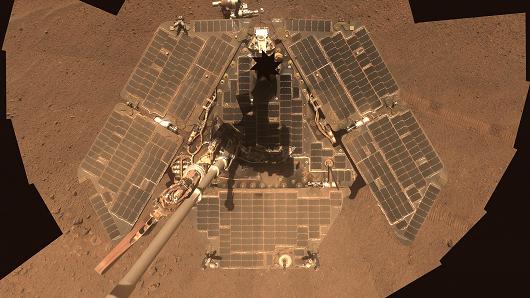
The Mars rover Opportunity has pushed its limits for more than a decade but NASA fears the worst as the exploration vehicle tries to survive an intense dust storm.
“[The rover] has fallen asleep and is waiting out the storm,” John Callas, Opportunity’s project manager at NASA’s Jet Propulsion Laboratory, told reporters Wednesday. “It’s completely black on Mars.”
The storm covers nearly a quarter of the Martian surface and NASA said the dust has become so thick that enough light cannot reach the solar-powered rover on the surface.
NASA engineers last heard from Opportunity three days ago, when the rover sent a message from its perch on a slope in Perseverance Valley on Mars, a location appropriately named for Opportunity’s current situation.
With the temperature on Mars falling as low as minus 20 degrees Fahrenheit, Callas explained how Opportunity must stay warm enough to keep from freezing its computer – a fate which NASA believes befell sister rover Spirit in 2010 after getting stuck in sand. Opportunity rolls around the surface, which helps it keep warm, but won’t be able to move again until the storm passes.
Callas was optimistic, however, as he thinks the rover will be able to hibernate without freezing. The dust storm brought warmer temperatures with it and the region on Mars is entering the summer season.
“It should be able to ride out this storm,” he said.
The rover, about the size of a golf cart, landed on Mars on Jan. 25, 2004. The initial mission was expected to last only 90 days but has now lasted nearly 15 years.
Opportunity will remain in its “low power mode” until it can collect more solar energy, Callas said. Then it will autonomously attempt to wake up and try to re-establish communications with its human drivers on Earth.
“By no means are we out of the woods here. This storm is threatening. We have no idea how long it will last and we don’t know what the environment will be like once it clears,” Callas said.

